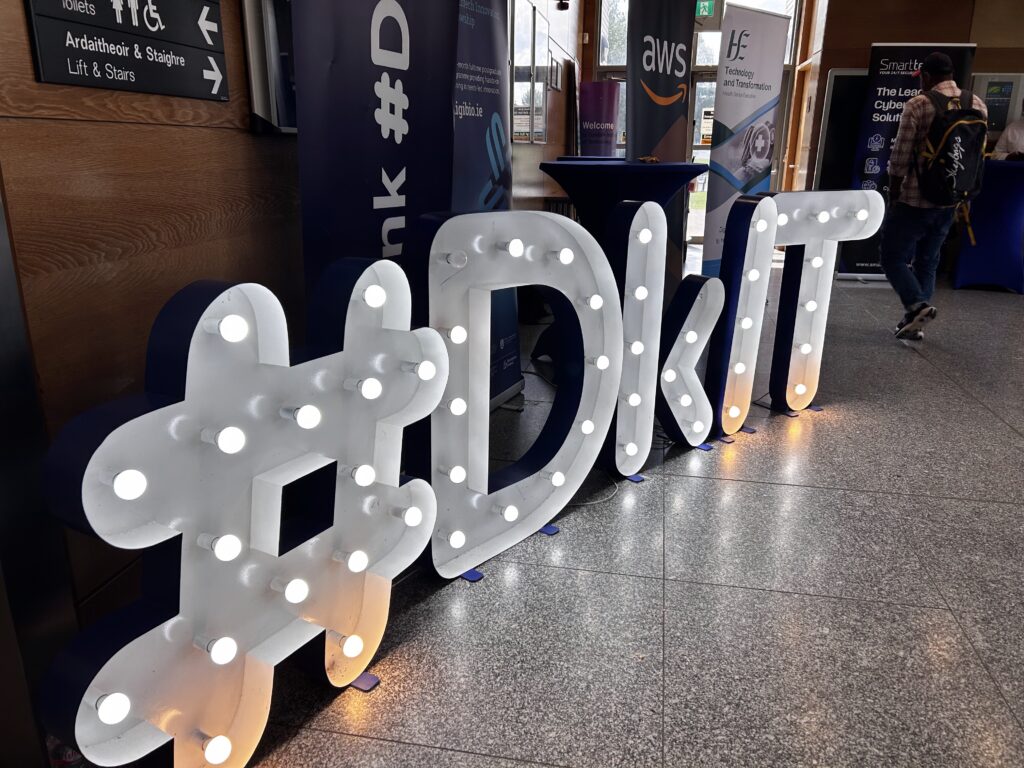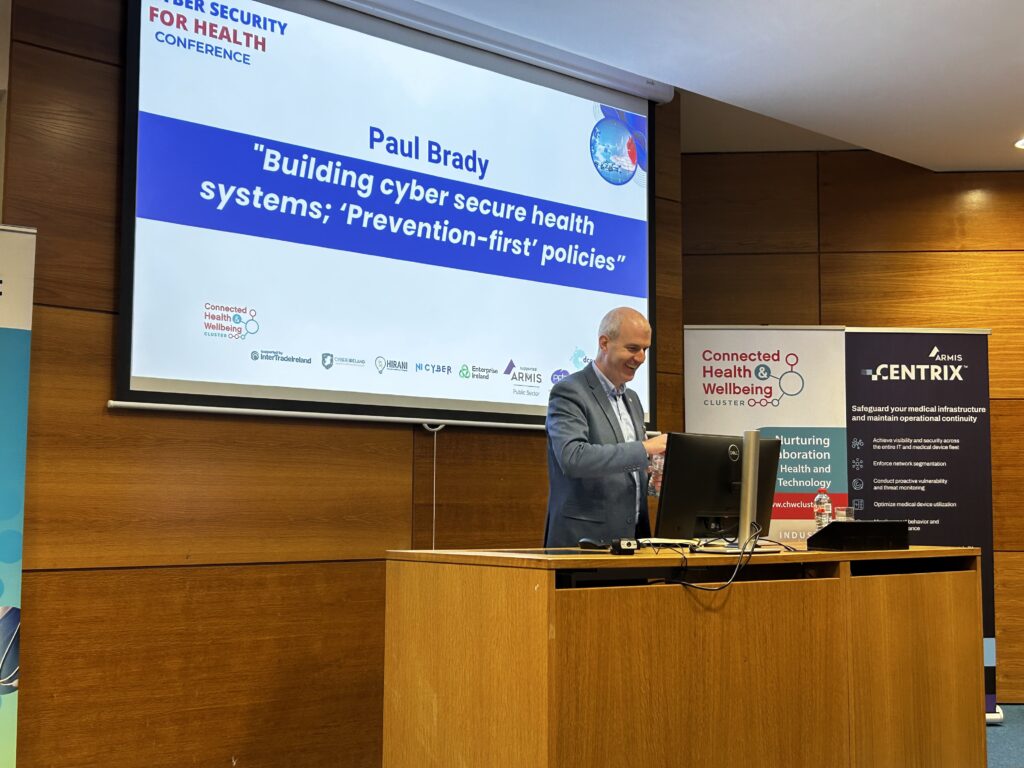
Last week, we had the privilege of attending the Cyber Security for Health Conference, a landmark event that brought together leaders from healthcare, technology, government, and academia to tackle one of the most pressing challenges of our time: securing the digital future of health.
Hosted by DkIT and supported by Enterprise Ireland, the conference was a powerful reminder that cybersecurity in healthcare is not just a technical issue, it’s a collective responsibility. With the health sector consistently ranking among the most targeted industries for cyberattacks, the need for a unified, proactive approach has never been more urgent.
🔐 Key Themes That Resonated
1. Cybersecurity is Patient Safety
As Paul Brady of UnitedHealth Group powerfully stated, “Cybersecurity is a patient safety issue.” Real-world examples, including ransomware attacks that disrupted hospital operations and even contributed to patient deaths, underscored the life-or-death stakes of digital resilience.
2. Collaboration is Critical
From the dConnect Health Cluster to the CORE Network and NIS2 coordination efforts, the conference showcased how cross-sector collaboration between clinicians, technologists, regulators, and innovators is essential to building secure, interoperable systems.
3. Regulation is Evolving
The National Cyber Security Centre (NCSC) outlined the upcoming NIS2 Directive, which will significantly expand the scope of cybersecurity obligations for health entities. The message was clear: compliance is no longer optional, and leadership accountability is key.
4. Innovation Must Be Secure by Design
Sessions on needs-led innovation, AI in healthcare, and medical device security emphasized that cybersecurity must be embedded from the start not bolted on later. At NexGen Cyber we are working with leading companies in the HealthTech sector that are creating innovative solutions. We are supporting them by ensuring secure by design principals are at the core of their product roadmaps.
🏗️ A Construction Analogy That Hit Home
Paul Brady offered a compelling analogy that resonated deeply with attendees. He compared the current state of cybersecurity in healthcare to the construction industry in the late 1980s and early 1990s. Back then, hard hats, high-visibility vests, and steel toe caps weren’t standard practice they were often overlooked or inconsistently enforced.
Fast forward to today, and no one steps onto a construction site without proper PPE and a health and safety briefing on day one. It’s second nature. Paul’s point was clear: cybersecurity will reach this level of maturity too, but it will take time, commitment, and collective effort.

5. Cyber Ireland, Enterprise Ireland and NCSC
Paul Browne from Enterprise Ireland and Eoin Byrne from Cyber Ireland spoke about the Cyber Security Grants and how Enterprise Ireland clients can avail of these grants to assess the security posture of their environments. Cyber Ireland has a vetted list of approved vendors of which NexGen Cyber is proud to be one of the leaders in the industry. Having conducted assessments for clients in health tech sector and helped them through the NCSC Cyber Remediation Grant we have transformed customers security posture, making them safer environments for their staff, their customers and ultimately the patients they support. We look forward to continuing to make a difference in the health tech industry.
🤝 Our Commitment Going Forward
- Strengthen partnerships with other health tech innovators, public bodies, and cybersecurity experts.
- Lead by example with NIS2 and ISO27001 standards embedded in everything we do.
- Embed security into every layer of our digital health solutions from design to deployment.
- Support industry development by promoting cyber audit and cyber remediation grants.
📢 Final Thoughts
The Cyber Security for Health Conference reminded us that no single organisation can tackle these challenges alone. But together, as an industry, as a community, we can build a safer, smarter, and more resilient healthcare system for Ireland.
Let’s keep the momentum going.